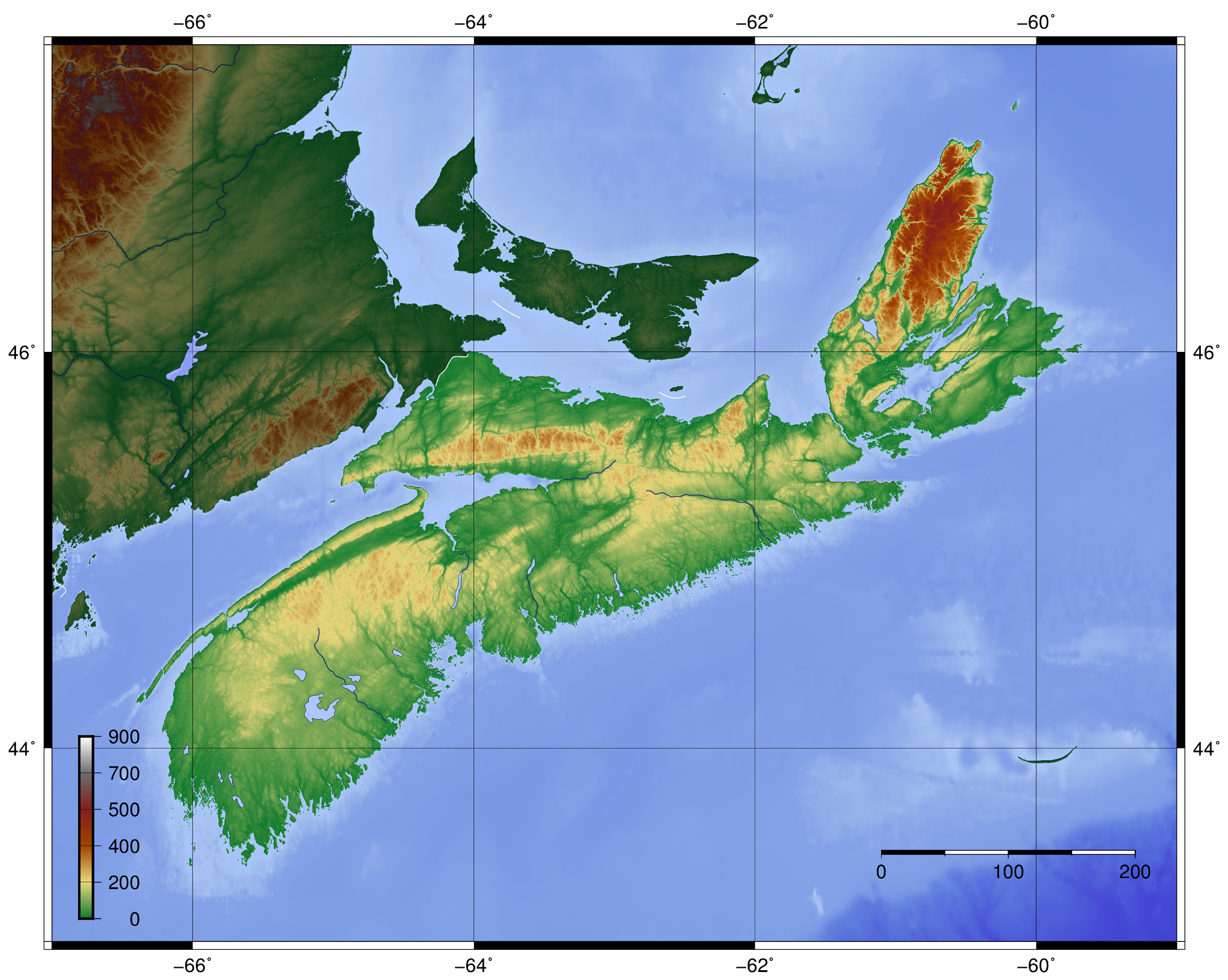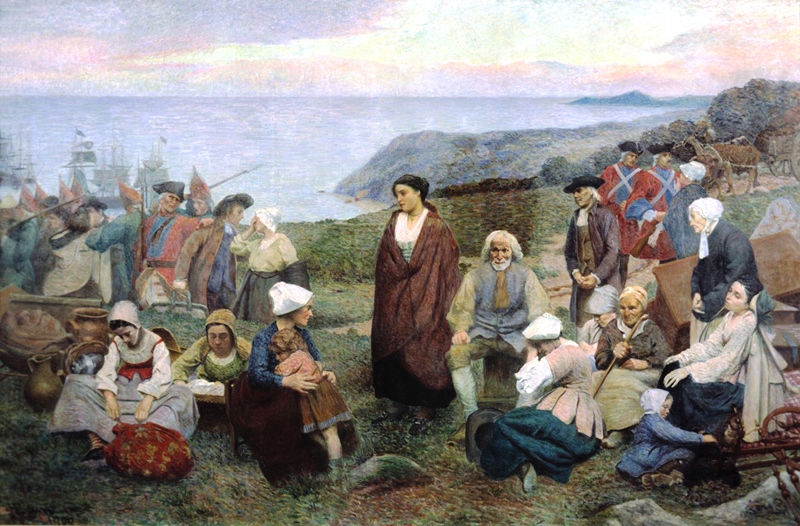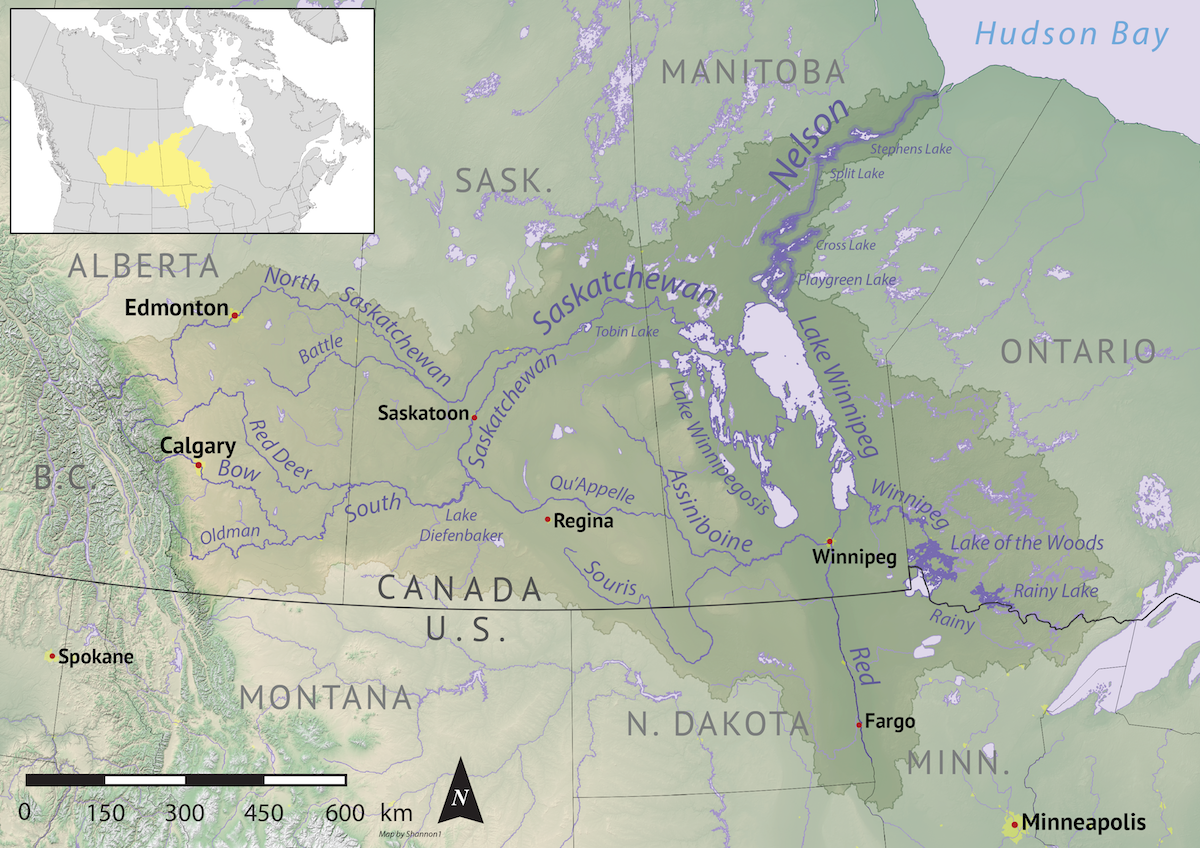|
1736 In Canada
Events from the year 1736 in Canada. Incumbents * French Monarch: Louis XV * British and Irish Monarch: George II Governors *Governor General of New France: Charles de la Boische, Marquis de Beauharnois * Colonial Governor of Louisiana: Jean-Baptiste le Moyne de Bienville *Governor of Nova Scotia: Lawrence Armstrong * Commodore-Governor of Newfoundland: Jean-Baptiste Le Moyne de Bienville Events * Father Jean-Pierre Aulneau, Jean Baptiste de La Vérendrye and 19 French voyageurs were headed from Fort St. Charles to Montreal via Fort St. Pierre. On their first night out they were massacred by Sioux warriors on a nearby island in Lake of the Woods. The date was June 8. Deaths * March 25 - François-Marie Bissot, Sieur de Vincennes, explorer and soldier (born 1700). Full date unknown * Christopher Dufrost de La Jemeraye died May 10 of this year. In ill health he was travelling from Fort Maurepas (Canada) on the Red River to Fort St. Charles on Lake of the Woods. He wa ... [...More Info...] [...Related Items...] OR: [Wikipedia] [Google] [Baidu] |
List Of Canadian Monarchs
Listed here are the monarchs who reigned over Canada, starting with the French colony of Canada which subsequently became a British colony, followed by the British Dominion of Canada, and finally the present-day sovereign state of Canada. The date of the first claim by a monarch over Canada varies, with most sources giving the year as 1497, when John Cabot made landfall somewhere on the North American coast (likely either modern-day Newfoundland or Nova Scotia), and claimed the land for England on behalf of King Henry VII. However, some sources instead put this date at 1535 when the word "Canada" was first used to refer to the French colony of Canada, which was founded in the name of King Francis I. Monarchical governance subsequently evolved under a continuous succession of French, British, and eventually uniquely Canadian sovereigns. Since the first claim by Henry VII, there have been 33 sovereigns of Canada, including two sets of co-sovereigns. While Canada became a Domin ... [...More Info...] [...Related Items...] OR: [Wikipedia] [Google] [Baidu] |
Christopher Dufrost De La Jemeraye
Christopher Dufrost de La Jemeraye (also known as Christophe Dufrost de La Jemerais with various variations on the last name),(b. December 6, 1708 – d. May 10, 1736), was the lieutenant and nephew of Pierre Gaultier de Varennes et de La Vérendrye in the exploratory party that headed west from Fort Kaministiquia, Ontario, Canada, in 1731. He and Jean Baptiste de La Vérendrye established Fort St. Charles on Lake of the Woods in 1732. In the spring of 1733, he and Jean Baptiste headed down the Winnipeg River to set up a post in the Lake Winnipeg area. Ice stopped them and La Jemeraye returned to Fort St. Charles while his cousin established a small temporary fort named La Barrière. La Jemeraye continued as an important participant in La Vérendrye's exploration and fur trading activities. He and Jean Baptiste de La Vérendrye built Fort Maurepas about six miles north of present-day Selkirk, Manitoba in 1735. Traveling from there to Fort St. Charles via the Red River/Savanne ... [...More Info...] [...Related Items...] OR: [Wikipedia] [Google] [Baidu] |
Commissioners For Trade And Plantations
The Commissioners for Trade and Plantations was a body formed by the British Crown on 15 May 1696 to promote trade and to inspect and improve the plantations of the British colonies. It was the successor of various previous bodies set up in the seventeenth century, particularly the Lords of Trade and Plantations (1675–1696). It lasted until its abolition in 1782. It carried out its duties by maintaining correspondence with colonial governors, conducting inquiries, hearing complaints and interviewing merchants and colonial agent A colonial agent was the official representative of a British colony based in London during the British Empire. About 200 men served. They were selected and paid a fixed salary by the colonial government, and given the long delays in communication ...s. The information so obtained was used to advise King and Parliament. The new board did not exercise executive authority and had no significant powers of appointment. Nevertheless it exerted significant influ ... [...More Info...] [...Related Items...] OR: [Wikipedia] [Google] [Baidu] |
Cape Sable Island
Cape Sable Island, locally referred to as Cape Island, is a small Canadian island at the southernmost point of the Nova Scotia peninsula. It is sometimes confused with Sable Island. Historically, the Argyle, Nova Scotia region was known as Cape Sable and encompassed a much larger area than simply the island it does today. It extended from Cape Negro (Baccaro) through Chebogue. The island is situated in Shelburne County south of Barrington Head, separated from the mainland by the narrow strait of Barrington Passage, but has been connected since 1949 by a causeway. The largest community on the island is the town of Clark's Harbour. Other communities are listed below. At the extreme southern tip is Cape Sable. History Cape Sable Island was inhabited by the Mi'kmaq who knew it as Kespoogwitk meaning "land's end". It was first charted by explorers from Portugal who named it Beusablom, meaning "Sandy Bay". French Colony Cape Sable and Cape Negro, Nova Scotia were first s ... [...More Info...] [...Related Items...] OR: [Wikipedia] [Google] [Baidu] |
Dummer%27s War
Dummer's War (1722–1725) is also known as Father Rale's War, Lovewell's War, Greylock's War, the Three Years War, the Wabanaki-New England War, or the Fourth Anglo-Abenaki War. It was a series of battles between the New England Colonies and the Wabanaki Confederacy (specifically the Miꞌkmaq, Maliseet, Penobscot, and Abenaki), who were allied with New France. The eastern theater of the war was located primarily along the border between New England and Acadia in Maine, as well as in Nova Scotia; the western theater was located in northern Massachusetts and Vermont at the border between Canada (New France) and New England. During this time, Maine and Vermont were part of Massachusetts.The Nova Scotia theater of the Dummer War is named the "Mi'kmaq-Maliseet War". John Grenier. ''The Far Reaches of Empire: War in Nova Scotia 1710-1760''. University of Oklahoma Press. 2008. The root cause of the conflict on the Maine frontier concerned the border between Acadia and New England, whic ... [...More Info...] [...Related Items...] OR: [Wikipedia] [Google] [Baidu] |
Annapolis River
The Annapolis River (french: Rivière Annapolis) is a Canadian river located in Nova Scotia's Annapolis Valley. Geography Measuring 120 kilometres in length, the river flows southwest through the western part of the valley from its source in Caribou Bog (50 m 60 ftabove sea level) near the villages of Aylesford and Berwick in western Kings County, to its mouth at Port Royal where it empties into the Annapolis Basin. The estuary portion of the Annapolis River runs from Bridgetown to Port Royal and experiences a tidal range of approximately between tides. The eastern part of the Annapolis Valley is drained by the Cornwallis River, also rising in the Caribou Bog, which has been dated to 10,000 years old. According to estimates by the Province of Nova Scotia, there were 31,877 people resident within the Annapolis River watershed in 2011. The river flows through some of the most productive agricultural land in the province. The comparatively mild micro-climate produced by ... [...More Info...] [...Related Items...] OR: [Wikipedia] [Google] [Baidu] |
Nova Scotia Council
Formally known as "His Majesty's Council of Nova Scotia", the Nova Scotia Council (1720–1838) was the original British administrative, legislative and judicial body in Nova Scotia. The Nova Scotia Council was also known as the Annapolis Council (prior to 1749) and the Halifax Council (after 1749). After 1749, when the judicial courts were established, the Nova Scotia Council was limited to administrative and legislative powers. There was no legislative assembly in British-ruled Nova Scotia from the time of the conquest in 1710 until during the Seven Years' War in 1758. The Lords Commissioners for Trade and Plantations (or simply the Board of Trade) in London through much of the 1750s pressured the various governors in Nova Scotia to establish the General Assembly of Nova Scotia. The lack of civil government with an elected assembly was a drawback to attracting settlers from the older, established colonies of New England where the population was expanding and seeking new land ... [...More Info...] [...Related Items...] OR: [Wikipedia] [Google] [Baidu] |
Nova Scotia
Nova Scotia ( ; ; ) is one of the thirteen provinces and territories of Canada. It is one of the three Maritime provinces and one of the four Atlantic provinces. Nova Scotia is Latin for "New Scotland". Most of the population are native English-speakers, and the province's population is 969,383 according to the 2021 Census. It is the most populous of Canada's Atlantic provinces. It is the country's second-most densely populated province and second-smallest province by area, both after Prince Edward Island. Its area of includes Cape Breton Island and 3,800 other coastal islands. The Nova Scotia peninsula is connected to the rest of North America by the Isthmus of Chignecto, on which the province's land border with New Brunswick is located. The province borders the Bay of Fundy and Gulf of Maine to the west and the Atlantic Ocean to the south and east, and is separated from Prince Edward Island and the island of Newfoundland (island), Newfoundland by the Northumberland Stra ... [...More Info...] [...Related Items...] OR: [Wikipedia] [Google] [Baidu] |
Acadians
The Acadians (french: Acadiens , ) are an ethnic group descended from the French who settled in the New France colony of Acadia during the 17th and 18th centuries. Most Acadians live in the region of Acadia, as it is the region where the descendants of a few Acadians who escaped the Expulsion of the Acadians (aka The Great Upheaval / ''Le Grand Dérangement'') re-settled. Most Acadians in Canada continue to live in majority French-speaking communities, notably those in New Brunswick where Acadians and Francophones are granted autonomy in areas such as education and health. Acadia was one of the 5 regions of New France. Acadia was located in what is now Eastern Canada's Maritime provinces, as well as parts of Quebec and present-day Maine to the Kennebec River. It was ethnically, geographically and administratively different from the other French colonies and the French colony of Canada (modern-day Quebec). As a result, the Acadians developed a distinct history and cultu ... [...More Info...] [...Related Items...] OR: [Wikipedia] [Google] [Baidu] |
Cape Breton Island
Cape Breton Island (french: link=no, île du Cap-Breton, formerly '; gd, Ceap Breatainn or '; mic, Unamaꞌki) is an island on the Atlantic coast of North America and part of the province of Nova Scotia, Canada. The island accounts for 18.7% of Nova Scotia's total area. Although the island is physically separated from the Nova Scotia peninsula by the Strait of Canso, the long Canso Causeway connects it to mainland Nova Scotia. The island is east-northeast of the mainland with its northern and western coasts fronting on the Gulf of Saint Lawrence with its western coast forming the eastern limits of the Northumberland Strait. The eastern and southern coasts front the Atlantic Ocean with its eastern coast also forming the western limits of the Cabot Strait. Its landmass slopes upward from south to north, culminating in the highlands of its northern cape. One of the world's larger saltwater lakes, ("Arm of Gold" in French), dominates the island's centre. The total populat ... [...More Info...] [...Related Items...] OR: [Wikipedia] [Google] [Baidu] |
1713 In Canada
Events from the year 1713 in Canada. Incumbents *French Monarch: Louis XIV * British and Irish Monarch: Anne Governors * Governor General of New France: Philippe de Rigaud Vaudreuil * Colonial Governor of Louisiana: Jean-Baptiste Le Moyne de Bienville then Antoine de la Mothe Cadillac *Governor of Nova Scotia: Francis Nicholson * Governor of Plaisance: Philippe Pastour de Costebelle Events * The Treaty of Utrecht. The French cede Newfoundland and the Hudson Bay region. They retain Cape Breton Island and Île Saint-Jean ( Prince Edward Island). * Treaty of Utrecht cedes French Acadia, Newfoundland, Hudson Bay and the "country of the Iroquois" to England. * The Treaty of Utrecht ends Queen Anne's War, confirming British possession of Hudson Bay, Newfoundland and Acadia (except Île-Royale Cape Breton Island). France starts building Fortress Louisbourg near the eastern tip of Île-Royale. Births * Jean Baptiste de La Vérendrye born September 3, the eldest son of Pie ... [...More Info...] [...Related Items...] OR: [Wikipedia] [Google] [Baidu] |
Pierre Gaultier De Varennes, Sieur De La Vérendrye
Pierre Gaultier de Varennes, sieur de La Vérendrye (17 November 1685 – 5 December 1749) was a French Canadian military officer, fur trader, and explorer. In the 1730s, he and his four sons explored the area west of Lake Superior and established trading posts there. They were part of a process that added Western Canada to the original New France territory that was centred along the Saint Lawrence basin. He was the first known European to reach present-day North Dakota and the upper Missouri River in the United States. In the 1740s, two of his sons crossed the prairie as far as present-day Wyoming, United States and were the first Europeans to see the Rocky Mountains north of New Mexico. Early life Born in Trois-Rivières, New France, Pierre was the eldest son of René Gaultier de Varennes, who came to Canada as a soldier in 1665, and Marie, the daughter of Pierre Boucher, the first Governor of Trois-Rivières. The Gaultier family were minor nobility or landowne ... [...More Info...] [...Related Items...] OR: [Wikipedia] [Google] [Baidu] |






